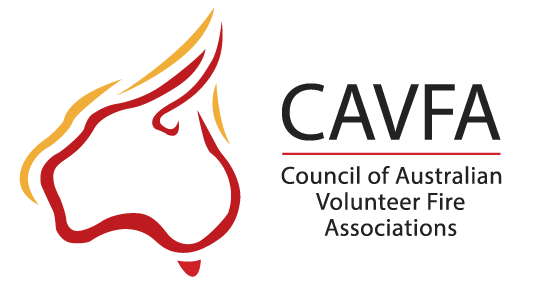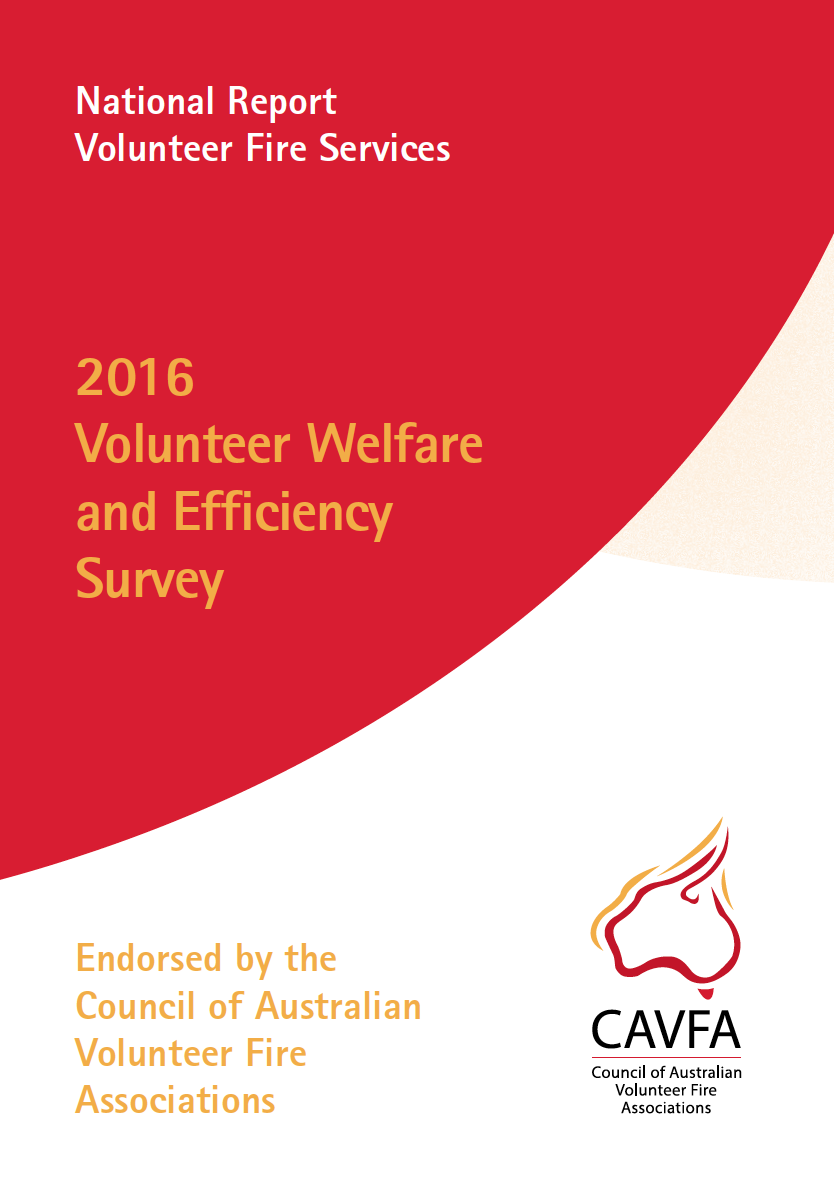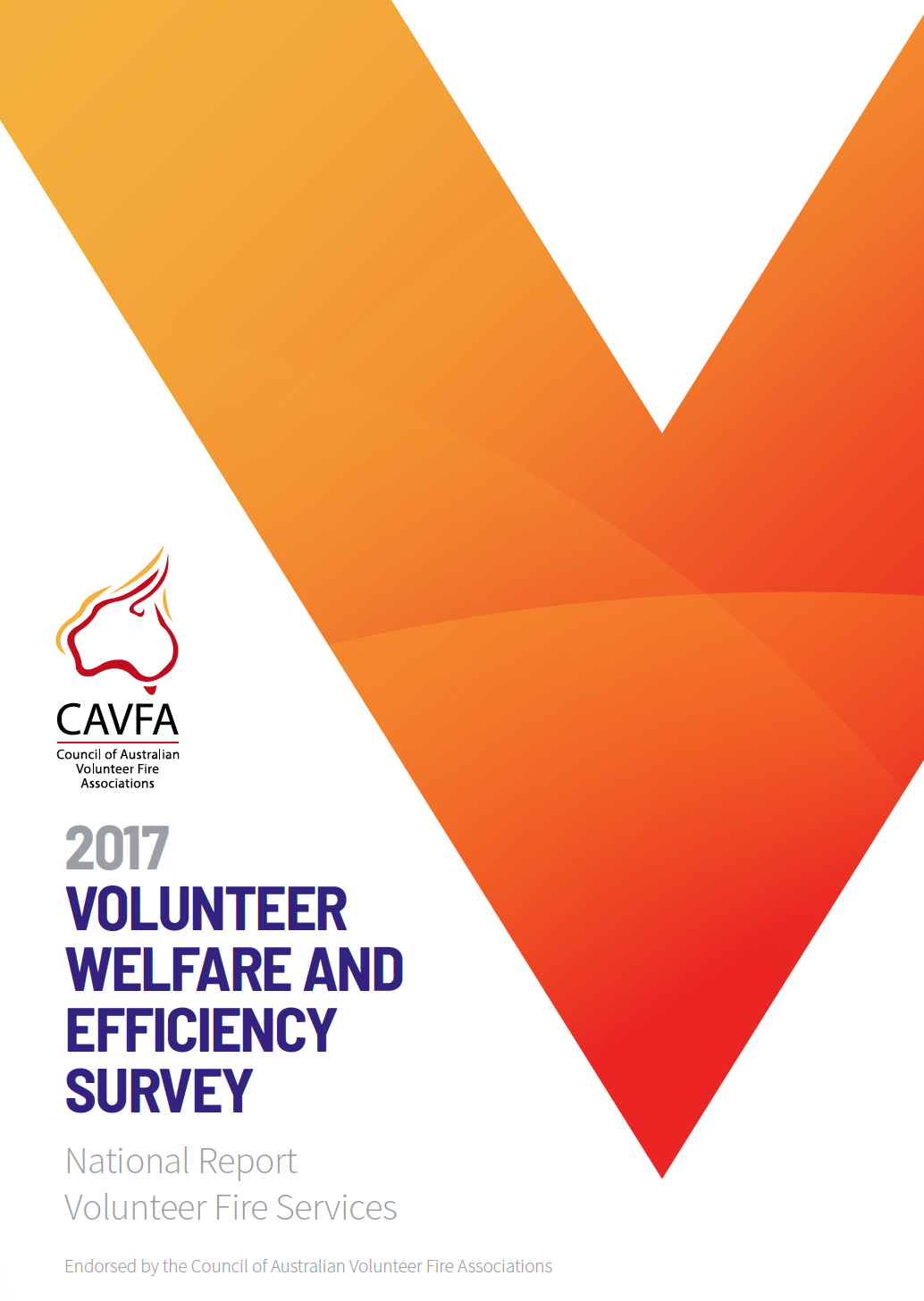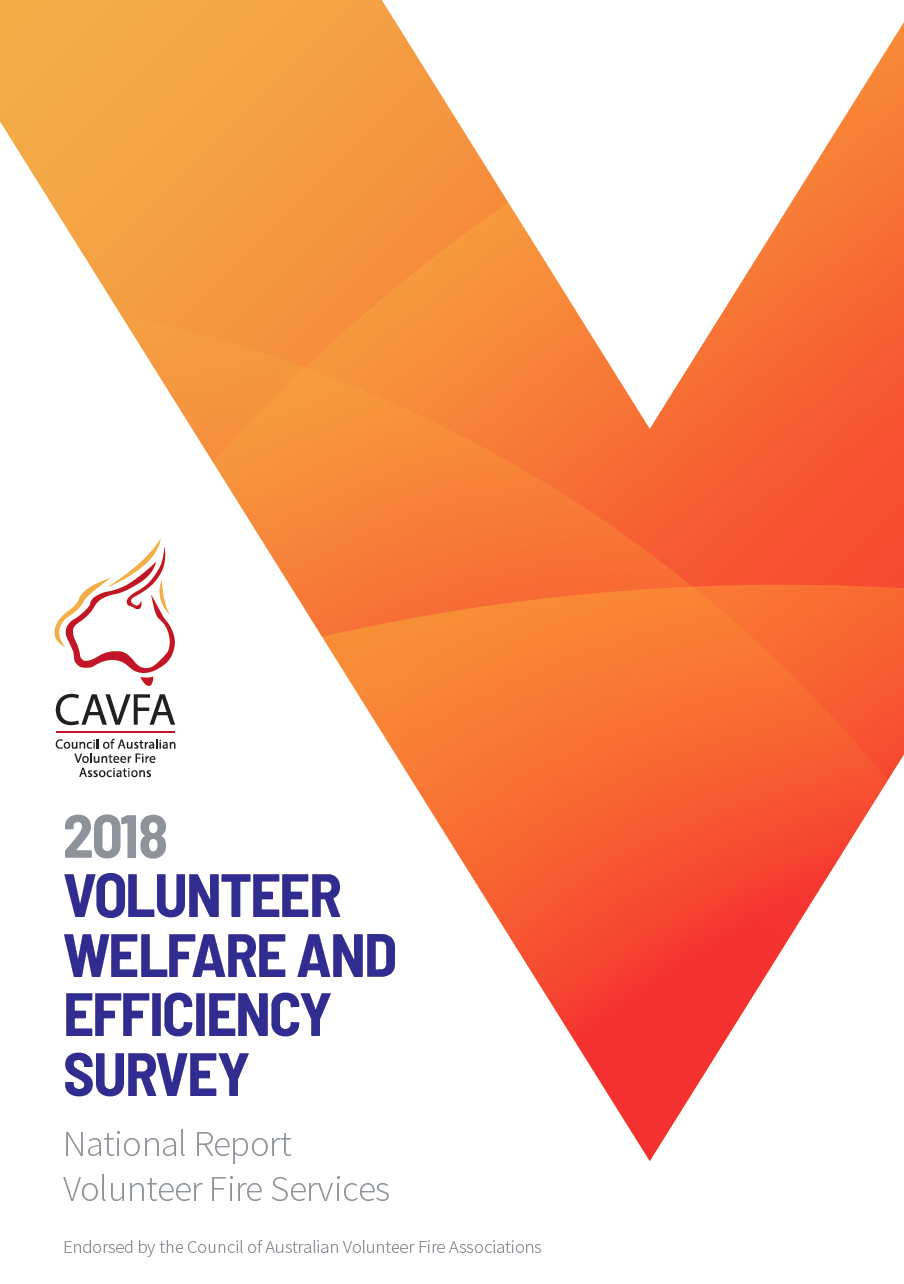2018 Survey Report
The 2018 Volunteer Welfare and Efficiency Survey attracted responses from almost 6,000 fire service volunteers from across Australia, the survey was run during the months of September and October 2018. This was the third national survey for fire service volunteers, the survey provides evidence, quantitative and qualitative data on matters of importance to volunteers. The Volunteer Welfare and Efficiency Survey was established by Volunteer Fire Brigade’s Victoria (VFBV) in 2012 and was endorsed by CAVFA in 2016 to be expanded to allow fire service volunteers from across Australia to take part.
The 2018 survey results show that consistently across all participating fire services, volunteer expectations are closest to being met at their local brigade level. The areas of the survey that focus on recruitment and retention and people management at brigade level have the smallest gaps between volunteer expectations and performance. Volunteer expectations are furthest from being met in the area of consultation and being involved in decision-making at a corporate and regional level within agencies. Training is a second key area with a large gap between volunteer expectations and performance of agencies, it is clear from the results that fire service volunteers would like to see more opportunities for training in the areas of people management, brigade management, conflict resolution and mentoring. Volunteers also feel that there are not enough training opportunities provided by agencies in formats, at times and at locations that make it easy for me to participate.
Volunteer associations who participated in the 2018 National Volunteer Welfare and Efficiency Survey were:
- NSW Rural Fire Service Association (RFSA)
- Rural Fire Brigades Association Queensland (RFBAQ)
- Tasmanian Volunteer Fire Brigades Association (TVFBA)
- Volunteer Fire and Rescue Services Association of WA (VFRSA)
- Volunteer Fire Brigades Victoria (VFBV)
To download a copy of the 2018 Volunteer Welfare and Efficiency Survey National Report click the link below.
The 2019 National Volunteer Welfare and Efficiency Survey will be running again in later in the year, keep an eye out for your volunteer association promoting the survey and take part to ensure that your voice is heard.
2017 Survey Report
The results of the 2017 Volunteer Welfare and Efficiency Survey are largely consistent with the outcomes of the 2016 Volunteer Welfare and Efficiency Survey. It is clear that fire service volunteers are least satisfied when in the areas which are the responsibility of the corporate level of their agency.
On a positive note, fire service volunteers are most satisfied with performance where the responsibility lies with the local brigade.
Volunteer Satisfaction
- 83% of respondents to the survey indicated that they are satisfied with their volunteer role.
- 89% of respondents indicated that they intend to continue in their volunteer role
- 83% of respondents would recommend being a fire services volunteer to others
- In contrast, only 64% of fire service volunteers are satisfied with how they are treated by their agency.
Which expectations are closest to being met?
The following statements in the survey had the smallest gaps between volunteer expectations and performance:
- There are no barriers to the roles women can occupy in my brigade.
- People from all cultural backgrounds, different religious, political and personal beliefs are all made welcome at my brigade.
- The environment at my brigade is volunteer-friendly, welcoming to new members and creates good morale.
- I feel the time I devote to [Agency] is productive and worthwhile.
- New volunteers are actively supported to allow them to turn out to incidents within a reasonable time of joining the brigade.
- Volunteers are effectively consulted and involved in decision making at brigade level.
- New volunteers in non-response roles are actively supported to allow them to contribute in my brigade within a reasonable time of joining.
- Workplace bullying is not tolerated in brigades of which I have been a member.
Where does priority action need to be taken?
The following statements in the survey, has the biggest gaps between volunteer expectations and performance:
- Volunteers are effectively consulted and involved in decision making at [Fire Service] corporate level
- [Agency] provides enough training opportunities in formats, at times and at locations that make it easy for me to participate.
- Volunteers are effectively consulted and involved in decision making at local District/Regional level.
- [Agency] provides good leadership training for volunteers in people management, brigade management, conflict resolution and mentoring.
A copy of the 2017 Volunteer Welfare and Efficiency Survey National Report is available to download below and the 2016 Volunteer Welfare and Efficiency Survey National report is available here.
2016 Survey Report
In 2016, over 6,100 fire service volunteers from around Australia took part in a survey on matters relating to volunteer welfare and efficiency. Covering such topics as Respect and Professionalism, Training and People Management, the survey is a valuable and credible method to understand volunteers’ needs and expectations.
Developed by fire service volunteers, the survey has been a success in Victoria since 2012 and is now being offered to fire service volunteers for a second year, as part of a move by the national body for volunteer associations, the Council of Australian Volunteer Fire Associations (CAVFA).
The survey is designed to better understand the issues as volunteers see them, and is used by volunteer associations to bring the frontline volunteers’ opinions and advice on matters affecting their welfare and efficiency directly to the State Government and senior decision makers in the Emergency Management sector.
Results are made available to Government and the EM Sector so the very foundation of the volunteer-based emergency service continues to be recognised and supported to meet the future emergency services needs of the community.
The survey is a cooperative process, allowing each Association to provide reliable facts and figures to support its representation of all volunteers. The results for each survey are then collated to present a national overview of what are the key issues facing fire services volunteers across the country.
To download a copy of the 2016 National Report Volunteer Fire Services Volunteer Welfare and Efficiency Survey click the link below:



